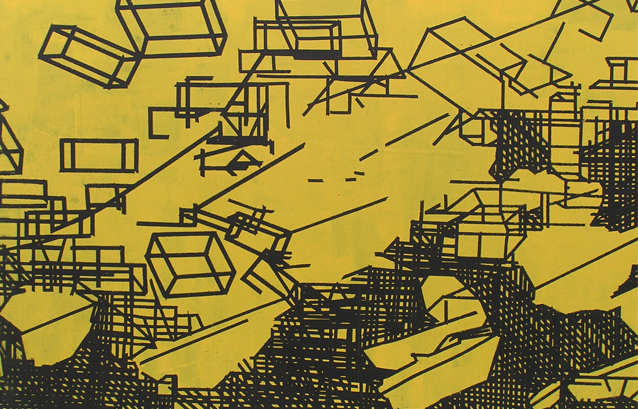Graffiti is often perceived as a negative element in the public streetscape. What made you decide to incorporate it into the exterior of your home?
I don’t perceive it as a negative and while it’s true to say that it is often considered a negative by the broader community, graffiti has also long been widely respected (Banksy’s auction results spring to mind and, a long time ago, Andy Warhol and the New York scene was pretty interested in Basquiat).
Graffiti is carried out by all sorts of people. The perception of a disenchanted youth spraying the streets doesn’t ring true in my experience. Most established work is by older people. Sure, tags are generally by younger guys but this is a pretty small proportion of the graffiti in our neighbourhood.

How important is graffiti art to the cultural fabric of your neighbourhood/suburb?
We built a house in an area where graffiti was well established. In the immediate locality regular tours of the local street art are run through the summer. The tours attract a mixed patronage from young to old. In the broader suburb of Newtown, street art plays its own part in defining the area – the Martin Luther King mural on King Street is the most revered work and the May Lane street art project is a particularly potent example of the community’s acceptance of graffiti.

In relation to graffiti, a good friend of mine once commented that in comparison to the barrage of corporate advertising that we’re all fed on the streets through billboards and the like, graffiti could be seen as a benign and creative outlet for expression. With no consumer research, nothing to sell, graffiti provides for the untapped/unmetered expression. Sometimes it fails, sometimes it succeeds brilliantly. Marrickville Council won’t be taking down the Martin Luther King mural any time soon.
What has been the reaction to the stencil artwork and graffiti on your house?
The reaction has been generally very positive. The garage door is often used for photo shoots. Marrickville Council recently awarded the house a High Commendation in the Marrickville Medal for heritage and conservation in which the jury citation and the Mayor’s statement explicitly stated the unlikely appropriateness of the incorporation of graffiti.
Are there any graffitists you admire/own work of?
I don’t own any [but] I like the work of Will Coles, Junky, Ears, Mini Graff, the woolly street poles, and the random image/message that interrupts the current train of thought for a better course.

